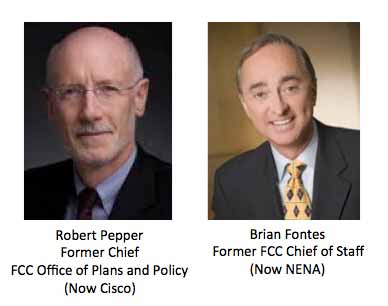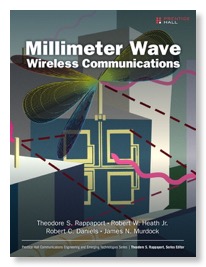2 Unsung FCC Pioneers in Early 5G #HighBandSpectrum Policy

(UPDATE: Robert Pepper is now with Facebook)
There is an implicit viewpoint at FCC that telecom technology is like a "conveyor belt sushi"/kaitensushi /回転寿司 restaurant in Japan: you sit at the counter and various types of sushi come on a conveyor belt in front of you unordered and you just wait until you see one you like and then take it off for eating. So at FCC you just wait for telecom technology to magically come from a conveyor belt and you pick winners and ignore the losers.
Video on "conveyor belt sushi"/kaitensushi /回転寿司 in Japan from NHK
Well, telecom technology does not come by magic! It requires bright people with good ideas and then investment in R&D to work on such ideas. In radio technology, the risk of that investment and thus its commercial likelihood depends on regulatory risk of FCC approving the commercial use and hence profitability of the technology.

"it took about ten years for low-cost commercial products to evolve from 1998 (sic) when USA became the first country in the world to authorize low-power 60 GHz operation…(S)hort range wireless networks provided the relevant applications to take advantage of unlicensed 60 GHz spectrum, as well as other frequencies in the mmWave band…Due to the inherent nature of mmWave frequencies … many emerging or future mmWave wireless products and standards (such as 5G mmWave cellular, inter vehicular communications, and backhaul/fronthaul communications standards) are likely to share characteristics with the 60 GHz WPAN/WLAN standards.
Thus #HighBandSpectrum 5G did not come unsummoned from a sushi conveyor belt, but derived from earlier visionary FCC action in Docket 94-124 in the Hundt Chairmanship. In my main website I have given more background of how this came about, here let me emphasize the role of the 2 individuals shown above.
When I proposed the concept of a 60 GHz unlicensed band in late1992 to the leadership of FCC's Office of Engineering and Technology, it was immediately rejected. This was probably because of the FCC culture related to "Nobody every got fired for buying IBM", i.e. if you only do things major regulatees propose you can never be criticized. (At the time I was working in EB's predecessor FOB as part of an "internal exile" resulting from the Docket 81-413 proceeding that is now known as the basis of Wi-Fi and Bluetooth but which at the time was very controversial.)
After the OET rejection, I sought guidance from Dr. Robert Pepper - legendary Chief of the FCC's Office of Plans and Policy (now OSP) from 1989 to 2005 - an amazing tenure in a very partisan agency. Bob was interested in the idea when I presented it to him, he asked me many questions and then proposed a meeting with the Chairman's Office to discuss the issue. This was during the Quello Chairmanship and Dr. Brian Fontes, his long term staffer was his Chief of Staff. Bob came with me to the meeting with Brian and the then Chief of OET. We both gave our viewpoints and Brian agreed with me that we should start drafting an NPRM for unlicensed use of 60 GHz - far above the then upper limit of FCC radio service rules at 40 GHz. The NPRM was drafted and approved on 10/20/95 under Chmn. Hundt who succeeded Quello. The R&O was adopted on 12/15/95 and by that time both Dr. Pepper and Dr. Fontes had left FCC after many years of loyal service.
Bob is now Vice President, Global Technology Policy at Cisco. Brian is now Chief Executive Officer of the National Emergency Number Association.
I hope that the 5G community can now remember that these two gentlemen played a key role in the early development of 5G #HighBandSpectrum policy in starting the "conveyor belt" moving at a time when the cellular mainstream had little or no interest in upper spectrum bands and thus giving us the wonderful technology that was approved yesterday!



![Validate my RSS feed [Valid RSS]](valid-rss-rogers.png)

